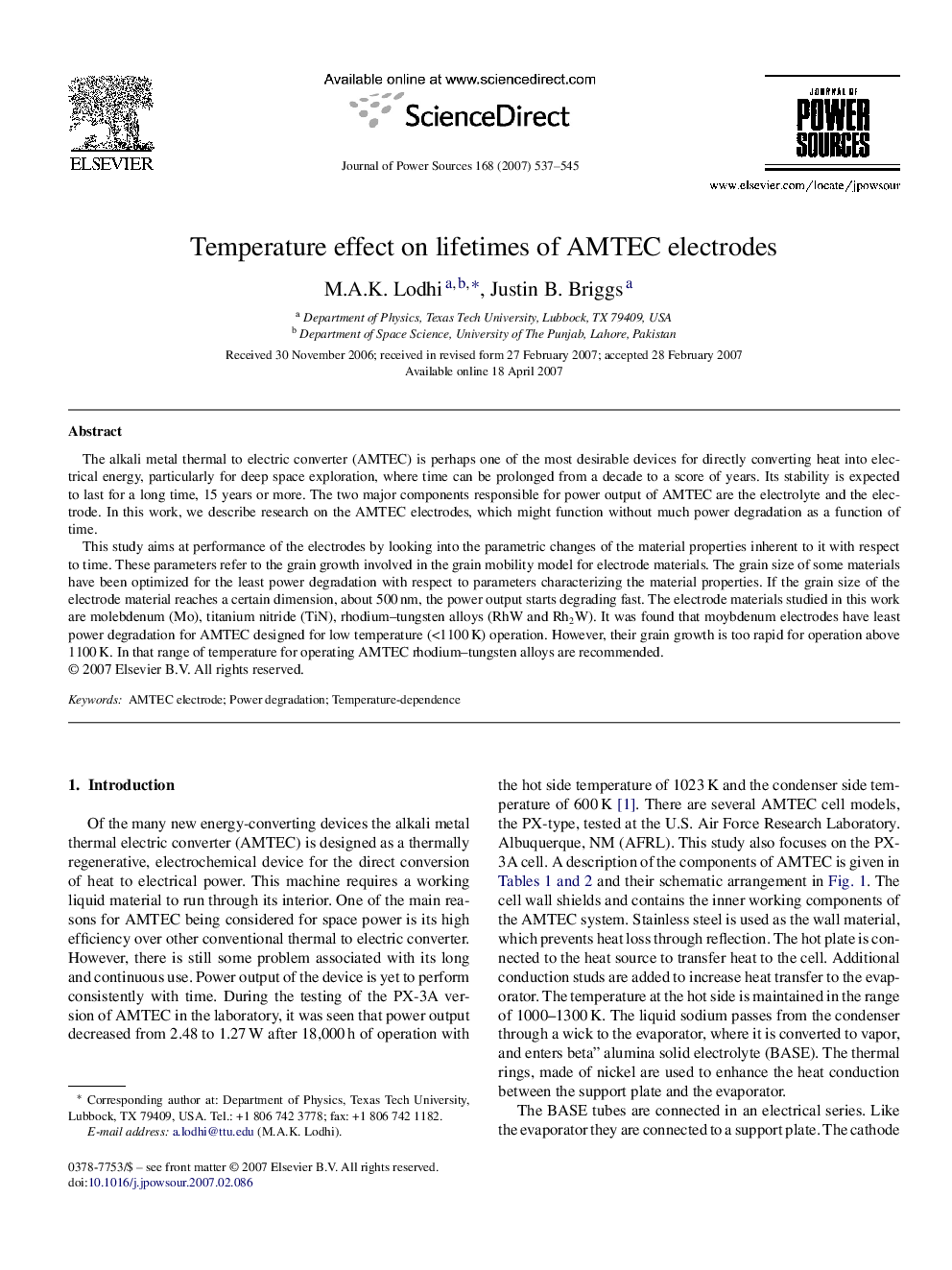| Article ID | Journal | Published Year | Pages | File Type |
|---|---|---|---|---|
| 1286465 | Journal of Power Sources | 2007 | 9 Pages |
The alkali metal thermal to electric converter (AMTEC) is perhaps one of the most desirable devices for directly converting heat into electrical energy, particularly for deep space exploration, where time can be prolonged from a decade to a score of years. Its stability is expected to last for a long time, 15 years or more. The two major components responsible for power output of AMTEC are the electrolyte and the electrode. In this work, we describe research on the AMTEC electrodes, which might function without much power degradation as a function of time.This study aims at performance of the electrodes by looking into the parametric changes of the material properties inherent to it with respect to time. These parameters refer to the grain growth involved in the grain mobility model for electrode materials. The grain size of some materials have been optimized for the least power degradation with respect to parameters characterizing the material properties. If the grain size of the electrode material reaches a certain dimension, about 500 nm, the power output starts degrading fast. The electrode materials studied in this work are molebdenum (Mo), titanium nitride (TiN), rhodium–tungsten alloys (RhW and Rh2W). It was found that moybdenum electrodes have least power degradation for AMTEC designed for low temperature (<1100 K) operation. However, their grain growth is too rapid for operation above 1100 K. In that range of temperature for operating AMTEC rhodium–tungsten alloys are recommended.
